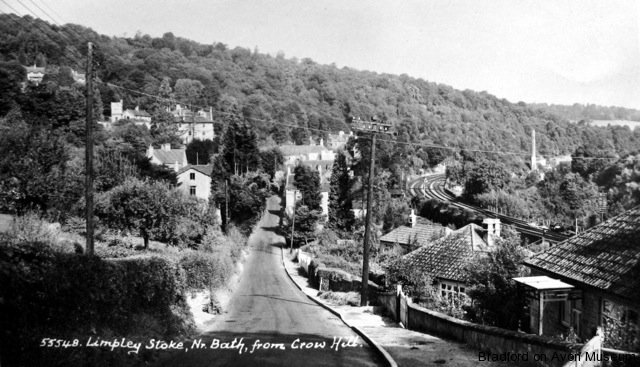The History of Limpley Stoke
The original Hanging Stoke, a Saxon settlement with a church that had later Norman additions, was situated east and south of the present church of St. Mary’s, almost in Freshford. The village suffered from the Black Death of 1348-49 with the original settlement almost totally wiped out.
A new village developed through the 15th century spreading towards the north. This was due to the introduction of cloth weaving with its dependence on the river, and is now known as Middle Stoke. By 1500, a fulling mill was providing employment and weavers’ cottages were built to accommodate the textile workers. It was around this new centre that the Bakery, Inn and Cider House established themselves, followed later by the School and Village Hall.
A fulling mill was owned by Eleanor Dicke the elder in 1698. The earliest document relating to the fulling mill dates from 1614 when Richard Dicke bought it from Frances Walsingham. It was leased out to different tenants including the Stratton family and a Mr. Perkins, but was advertised ‘For Sale’ in the Bath Chronicle of 1796 and bought by John Newton. Rebuilt as a factory it employed over 200 people by 1816, making it a major employer. It was later bought by Saunders Fanner and Company of Bradford on Avon, who went bankrupt in 1842. The building was damaged by fire in 1853 but revived later when the company that became Avon Rubber Company was started here in 1875, by Giles & Willie Holbrow. They were taken over by Browne and Margetson in 1886, with Willie Holbrow remaining as manager. In 1889 the business expanded and moved to Melksham.
The area has always been noted for its quarrying. The Hayes Wood Quarry in Midford Lane existed until 1940 and re-opened in 1982, although is limited to producing 20,000 tons of stone per year. The movement of stone was aided by the development of the railway and Limpley Stoke Station had two cranes to assist in the loading of the stone. Coal was moved both by the railway and the canal, and the Somerset Coal Canal, the Kennet and Avon Canal and the Camerton and Limpley Stoke Railway met at Claverton Basin.
History and Natural Environment Display
Book Download [19MB]: “Limpley Stoke: Its Church and its People” by Arnold Lewis & Neil Mattingly
This amazing book was the inspiration for much of the above history and natural environment display and has been very generously shared with us all by the authors. We send them our deepest thanks and gratitude.
Book Download [13MB]: “Limpley Stoke in World War Two - AN EXHIBITION TO MARK THE 50th ANNIVERSARY OF V-E DAY, 8th MAY, 1945” by the Limpley Stoke Fete Committee and members of the Community.
Our thanks to the Bradford on Avon Museum and Freshford.com for the amazing old photos below of the village.
Links to more information:
History walks and talks may be organised from time to time. These will be advertised on village website and in Limpley Stoke News.
Bristol Industrial Archaeological Society Journal
History about the Limpley Stoke Mill
Historic maps of Limpley Stoke
Freshford Local History Society
Wiltshire and Swindon History Centre
Book to Buy: “Freshford: The History of a Somerset Village” by Alan Dodge provides numerous well-researched references to Limpley Stoke. Copies of this book are available to purchase at the Galleries shop
The Titfield Thunderbolt
This enjoyable classic film was filmed in 1953 entirely on location in Limpley Stoke


















